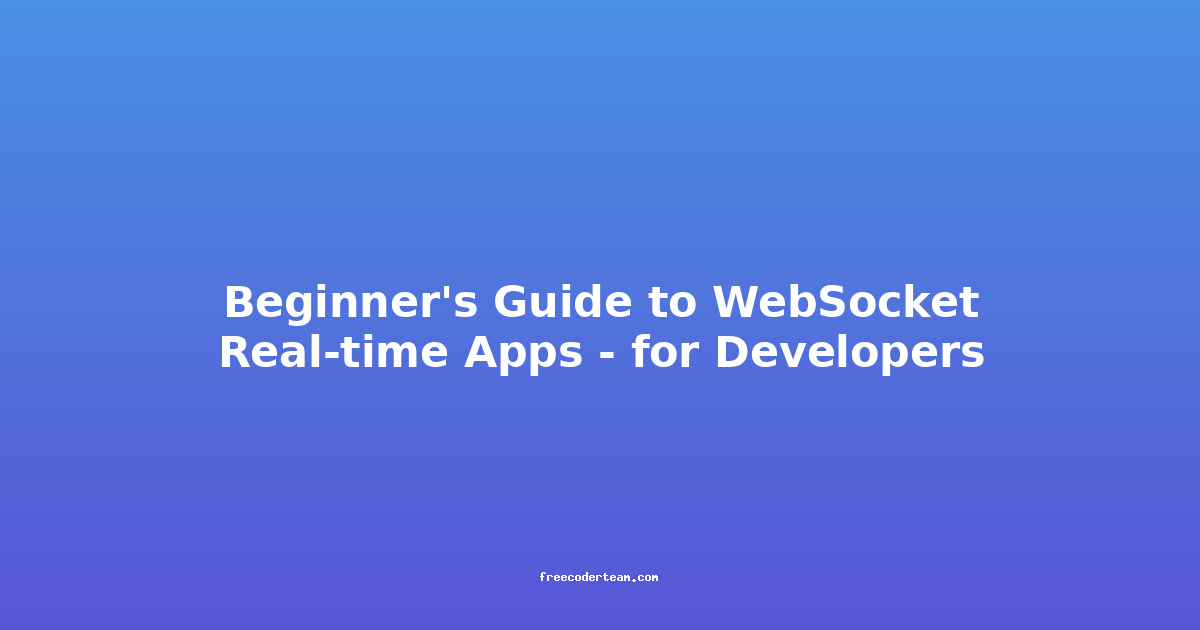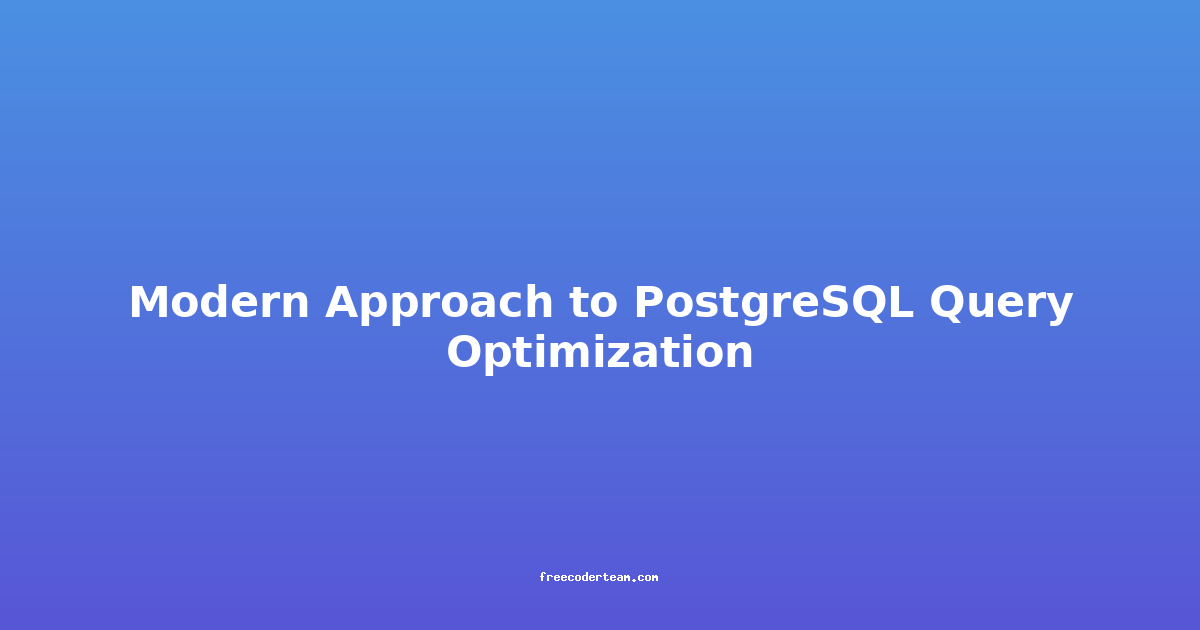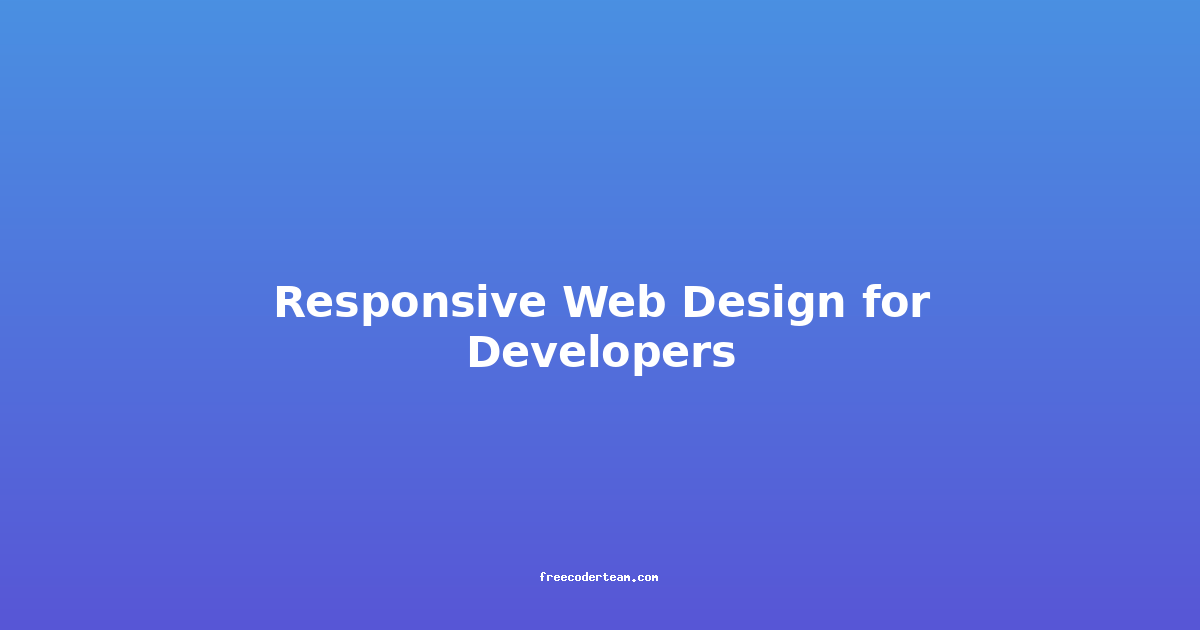Beginner's Guide to WebSocket Real-time Apps - For Developers
Real-time applications have become an integral part of modern web development. Whether it's a live chat, a multiplayer game, or a stock ticker, the ability to deliver data to users in real-time is essential. WebSocket is a protocol that enables bi-directional, full-duplex communication between a client (browser) and a server. This makes it ideal for building real-time applications where data needs to be sent and received without the overhead of traditional HTTP requests.
In this beginner’s guide, we’ll explore how to build WebSocket real-time applications, covering the basics, best practices, and practical examples. By the end, you’ll have a solid understanding of WebSocket and be equipped to build your own real-time applications.
Table of Contents
- What is WebSocket?
- Why Use WebSocket?
- Setting Up a WebSocket Server
- Connecting a Client to a WebSocket Server
- Handling Real-time Data
- Best Practices for WebSocket Apps
- Common Challenges and Solutions
- Conclusion
What is WebSocket?
WebSocket is a protocol that provides full-duplex communication over a single TCP connection. Unlike traditional HTTP, which is request-driven and stateless, WebSocket allows both the client and server to send and receive data at any time. This makes it perfect for scenarios where real-time data exchange is required.
Key features of WebSocket:
- Full Duplex: Data can flow in both directions simultaneously.
- Persistent Connection: Once the connection is established, it remains open until explicitly closed.
- Low Overhead: Minimal framing and headers compared to HTTP.
Why Use WebSocket?
WebSocket offers several advantages over traditional HTTP:
- Real-time Communication: Ideal for chat apps, live updates, and collaborative tools.
- Reduced Latency: No need for repeated HTTP requests, resulting in faster data delivery.
- Resource Efficiency: A single connection reduces the load on servers and networks.
- Bi-directional Communication: Both client and server can initiate data exchange.
However, WebSocket is not suitable for every use case. It's best used when real-time updates are critical, while HTTP is more appropriate for static content or when real-time isn’t required.
Setting Up a WebSocket Server
To build a real-time application, you'll need a WebSocket server. Below, we’ll use Node.js with the ws library to create a simple WebSocket server.
Using Node.js and ws Library
First, install the ws library:
npm install ws
Now, let’s create a simple WebSocket server:
// server.js
const WebSocket = require('ws');
const wss = new WebSocket.Server({ port: 3000 });
console.log('WebSocket server is running on port 3000');
wss.on('connection', (ws) => {
console.log('Client connected');
// Send a welcome message to the client
ws.send('Welcome to the WebSocket server!');
// Handle incoming messages from the client
ws.on('message', (message) => {
console.log(`Received: ${message}`);
ws.send(`Echo: ${message}`); // Echo the message back
});
// Handle client disconnection
ws.on('close', () => {
console.log('Client disconnected');
});
});
Explanation:
WebSocket.Server: Creates a new WebSocket server listening on port 3000.connectionevent: Triggered when a client connects to the server.sendmethod: Used to send messages to the client.messageevent: Triggered when the server receives a message from the client.closeevent: Triggered when the client disconnects.
Connecting a Client to a WebSocket Server
To connect a client to the WebSocket server, we’ll use the WebSocket class in the browser. Below is an example of a simple client:
HTML and JavaScript Client
<!DOCTYPE html>
<html lang="en">
<head>
<meta charset="UTF-8">
<meta name="viewport" content="width=device-width, initial-scale=1.0">
<title>WebSocket Client</title>
</head>
<body>
<h1>WebSocket Chat</h1>
<div id="messages"></div>
<input type="text" id="messageInput" placeholder="Type a message...">
<button id="sendButton">Send</button>
<script>
// Connect to the WebSocket server
const socket = new WebSocket('ws://localhost:3000');
// Handle connection open
socket.addEventListener('open', (event) => {
console.log('Connected to WebSocket server');
});
// Handle incoming messages
socket.addEventListener('message', (event) => {
const messagesDiv = document.getElementById('messages');
messagesDiv.innerHTML += `<p>${event.data}</p>`;
});
// Handle disconnection
socket.addEventListener('close', (event) => {
console.log('Disconnected from WebSocket server');
});
// Send a message when the button is clicked
document.getElementById('sendButton').addEventListener('click', () => {
const messageInput = document.getElementById('messageInput');
const message = messageInput.value.trim();
if (message) {
socket.send(message);
messageInput.value = ''; // Clear the input
}
});
</script>
</body>
</html>
Explanation:
WebSocketconstructor: Creates a new WebSocket connection tows://localhost:3000.openevent: Triggered when the connection is successfully established.messageevent: Triggered when a message is received from the server.closeevent: Triggered when the connection is closed.sendmethod: Used to send messages to the server.
Handling Real-time Data
Once the connection is established, you can start sending and receiving real-time data. Here’s an example of a simple chat application where messages are broadcast to all connected clients:
Updated Server (Broadcasting Messages)
// server.js
const WebSocket = require('ws');
const wss = new WebSocket.Server({ port: 3000 });
// Store connected clients
const clients = [];
wss.on('connection', (ws) => {
clients.push(ws); // Add client to the list
console.log('Client connected');
ws.on('message', (message) => {
console.log(`Received: ${message}`);
// Broadcast the message to all connected clients
clients.forEach((client) => {
if (client !== ws && client.readyState === WebSocket.OPEN) {
client.send(message);
}
});
});
ws.on('close', () => {
console.log('Client disconnected');
clients.splice(clients.indexOf(ws), 1); // Remove client from the list
});
});
Explanation:
clientsarray: Stores all connected WebSocket clients.- Broadcasting: When a client sends a message, it’s forwarded to all other connected clients using a
forEachloop.
Best Practices for WebSocket Apps
-
Use Secure WebSocket (wss://):
- Always use
wss://(WebSocket over TLS) to encrypt communications and protect sensitive data.
- Always use
-
Implement Heartbeats:
- Send periodic "heartbeat" messages to ensure the connection is alive. If no heartbeat is received, close the connection.
-
Handle Disconnections Gracefully:
- Implement logic to handle disconnections, such as reconnection attempts or notifying the user.
-
Limit Message Size:
- WebSocket has a maximum message size. Ensure messages are within acceptable limits to avoid errors.
-
Use Subprotocols:
- WebSocket supports subprotocols, which allow clients and servers to negotiate specific communication protocols. This can be useful for differentiating types of data.
-
Avoid Memory Leaks:
- Properly clean up resources when clients disconnect to prevent memory leaks.
Common Challenges and Solutions
1. Connection Issues
- Problem: Clients may lose connection due to network issues.
- Solution: Implement automatic reconnection logic with exponential backoff.
2. Scalability
- Problem: As the number of connected clients grows, the server may struggle to handle the load.
- Solution: Use WebSockets with a scalable architecture, such as load balancing and clustering.
3. Message Overhead
- Problem: Large or frequent messages can slow down performance.
- Solution: Compress messages or use binary protocols to reduce size.
Conclusion
WebSocket is a powerful protocol for building real-time applications. By using WebSocket, developers can create interactive and engaging experiences for their users. In this guide, we covered the basics of WebSocket, including setting up a server and connecting clients, handling real-time data, and best practices.
To recap:
- Server: Use libraries like
wsin Node.js to create WebSocket servers. - Client: Use the
WebSocketAPI in the browser to connect to the server. - Real-time Data: Implement broadcasting and other features to exchange data in real-time.
- Best Practices: Follow guidelines for security, scalability, and performance.
WebSocket is just one piece of the puzzle for real-time applications. As you explore further, consider integrating it with other technologies like WebRTC for audio/video communication or GraphQL subscriptions for real-time data updates.
Now that you have a foundational understanding of WebSocket, you’re ready to start building your own real-time applications. Happy coding!
Additional Resources:
Feel free to experiment with the code snippets provided and adapt them to your specific use case. Real-time applications are exciting, and WebSocket is the perfect tool to bring them to life! 🚀




